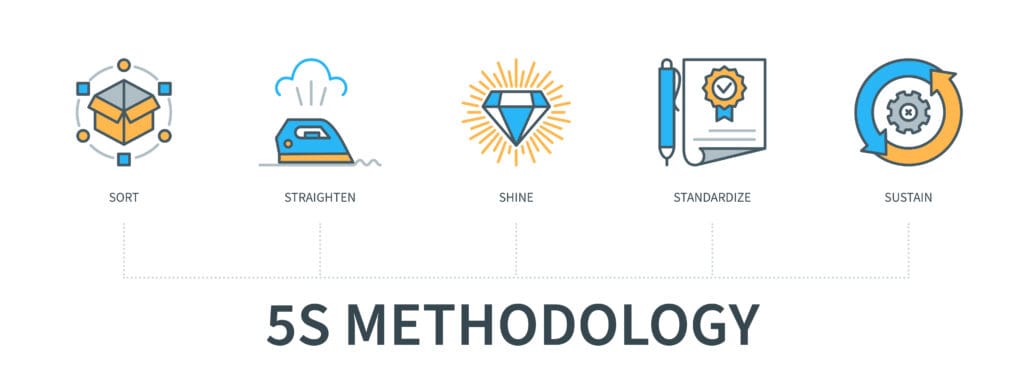It is no secret that the food and agriculture industries have been struggling in recent years. One of the biggest challenges these industries face is how to produce food and crops in a way that is both efficient and effective. However, there has been a shift in recent years toward a more holistic approach to manufacturing, called lean manufacturing.
In the food and agriculture industries, the term ‘lean’ has been used to describe a set of practices and principles that aim to reduce waste and increase efficiency in manufacturing. Although lean is often associated with manufacturing, you can apply it to any business or process.
This article will discuss the lean manufacturing practices you can use in food and agriculture and some of the associated benefits.
Understanding Lean Manufacturing Practices
Lean manufacturing practices are a set of principles and methods that are designed to improve efficiency and effectiveness in manufacturing and production processes. It aims to reduce waste and improve quality. The food and agriculture industries are unique because they are highly regulated and perishable. As a result, lean manufacturing practices in these industries must consider these factors.
There are several ways in which you can apply lean manufacturing practices in the food and agriculture industries. They include:
1. Value Stream Mapping (VSM)
One of the most important lean manufacturing tools is value stream mapping (VSM). VSM is a way to visualize the flow of materials and information as a product or service moves through a manufacturing or service process. It’s a powerful tool for identifying and eliminating waste in a process.
In the food and agriculture industries, there are many opportunities to use VSM to improve process flow and eliminate waste. For example, a food processing plant might have several value streams for different products. By mapping out each value stream, it’s possible to see where there are bottlenecks or other problems that are causing delays or inefficiencies.
Additionally, VSM can be used to map out the process of growing and harvesting crops. By understanding the value stream, farmers can identify areas where they can improve efficiency and yield. For example, they might discover that they are spending too much time on activities that don’t add value to the crop, such as tilling the soil unnecessarily.
2. Just-In-Time (JIT) Manufacturing
Just-in-time (JIT) manufacturing is a lean manufacturing technique used to improve the efficiency of a production process by reducing the amount of inventory on hand. It is a system where materials and components are delivered to the point of use just as they’re needed, rather than being stockpiled.
JIT manufacturing is based on the principle of ‘pull’ production, which means that each step in the production process only produces the amount of product needed by the next step. This type of manufacturing requires close collaboration between all supply chain members, as well as careful planning and execution using techniques such as Kanban.
3. Total Productive Maintenance (TPM)
Total productive maintenance (TPM) helps improve the uptime of production equipment. TPM is based on preventative maintenance, which means that equipment is regularly serviced and repaired before it breaks down.
TPM can be a difficult and time-consuming process to implement, but it can dramatically improve the uptime of production equipment. In addition, TPM can also promote the safety of a production process by reducing the number of accidents that can occur.
4. Six Sigma
Six Sigma is a set of techniques and tools for process improvement in food and agriculture. It was originally developed for manufacturing but has since been adopted in various other industries, including food and agriculture.
The Six Sigma approach is based on a data-driven approach to problem-solving. It starts with a clear understanding of customer needs and then uses data and statistical analysis to identify areas for improvement. Once potential improvements are identified, Six Sigma uses a set of tools and techniques to implement those improvements. One of the key benefits of Six Sigma is that you can use it to improve quality and productivity. In food and agriculture, this can lead to higher yields, lower costs, and fewer food safety issues.
5. 5s
In the food and agriculture industries, 5S is a lean manufacturing process that improves workplace efficiency and safety. The 5S comes from the Japanese words shitsuke, seiso, seiri, seiketsu, and seiton, which all mean to sustain, shine, sort, standardize, and set in order, respectively.

The 5S system can apply in any workplace, but it is particularly well-suited to the food and agriculture industries, where there is a need to maintain cleanliness and orderliness. Implementing 5S in a food or agriculture business while reducing waste and costs can help improve product quality, safety, and efficiency.
These are just a few lean manufacturing practices you can use in the food and agriculture industries. Companies can improve quality and productivity by implementing these practices while reducing costs.
Benefits Of Lean Manufacturing Practices For Food And Agriculture Businesses
Food and agriculture account for about 10% of the gross domestic product (GDP) in countries such as the United States. The food and agriculture sector is also a major employer, with nearly 24 million workers in the United States alone. Given the importance of the food and agriculture sector to the economy, it is not surprising that many businesses are adopting lean manufacturing practices.
There are many benefits that food and agriculture businesses can realize by adopting lean manufacturing practices. Some of them include the following:
Increased Efficiency
One crucial benefit of adopting lean manufacturing practices is increased efficiency. When food and agriculture businesses eliminate waste, they can produce more with less. It can lead to significant cost savings, as well as increased productivity.
improved Quality
In addition to increased efficiency, businesses that adopt lean manufacturing practices also tend to experience improved quality. That is because lean manufacturing practices help to ensure that products are made to the highest standards. In addition, lean manufacturing practices can help reduce the number of defects in products.
Improved Employee Morale
Another benefit is that it can help improve employee morale. When employees feel they are working in a well-organized and efficient environment, they are more likely to be satisfied with their jobs. In addition, lean manufacturing practices can help reduce the time employees spend on non-value-added activities.
Better Competitive Position
Finally, food and agriculture businesses that adopt lean manufacturing practices often find that they can better compete in the marketplace. That is because lean manufacturing can help them produce high-quality products at a lower cost. As a result, food and agriculture businesses that adopt lean manufacturing practices often find that they can win new customers and retain existing ones.
Lean manufacturing practices can help to improve food and agriculture products while reducing costs. Implementing Lean Manufacturing principles can be challenging, but the potential benefits are significant.
Summary
In both the food and agriculture industries, lean manufacturing practices are being used to improve the efficiency of operations and reduce waste. These practices are expected to continue to be adopted in these industries as companies seek to improve their bottom line. While some upfront costs may be associated with lean, the long-term benefits are typically well worth the investment. Businesses considering lean manufacturing should carefully weigh the costs and benefits of these practices before deciding to implement them. By reducing waste and maximizing value, businesses can improve their competitiveness and become more sustainable long term.
See Also:

2 Comments